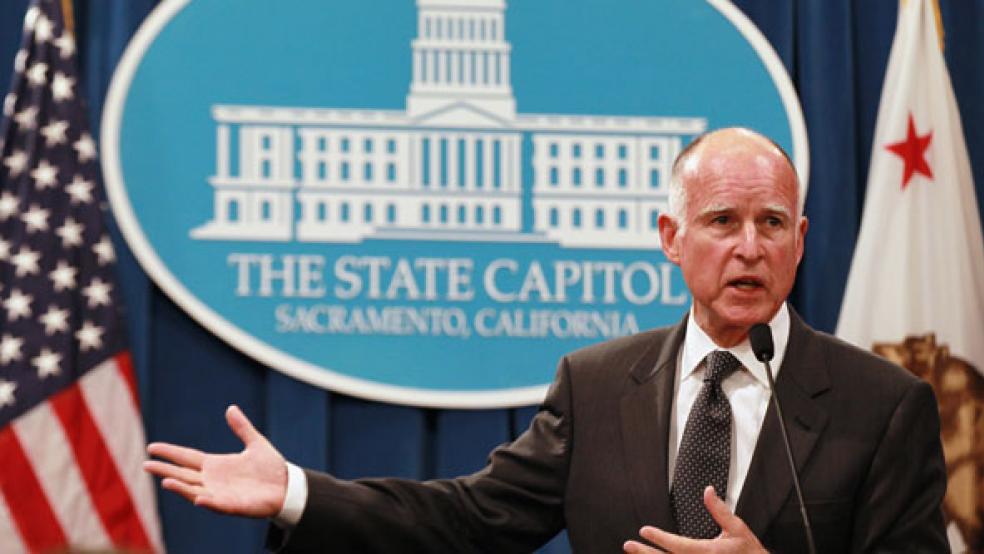State tax revenues increased at the quickest pace in almost five years this fourth quarter as economic gains fueled larger income and sales tax collections, a new report found. Still, the preliminary figures are only about 3 percent above revenue levels from 2009, suggesting state fiscal conditions remain fragile and years away from receiving a clean bill of economic health.
Total state tax collections in 41 states showed a 2010 fourth quarter, year-over-year rise of 6.9 percent, according the report released today by the Nelson A. Rockefeller Institute of Government at the State University of New York. That includes an average 10.7 percent increase in personal income tax collections and 6 percent increase in sales tax collections. So far, California reports the biggest income tax collection increase over last year — 32 percent — followed by Indiana at 15.9 percent and Massachusetts at 15.8 percent.
The report comes at a time of heightened problems at the state level, as many governors try to close gaping budget deficits. The Center on Budget and Policy Priorities, a Washington-based think tank, estimates that for fiscal year 2012, 44 states and the District of Columbia cumulatively face a $125 billion budget gap.
Jon Shure, deputy director of the State Fiscal Project at the CBPP says despite the revenue increases, fiscal year 2012, which starts on July 1 for most states, will be the most difficult budget year on record. In addition to spending the now-dry well of stimulus funding, Tracy Gordon, a state and local finance expert at The Brookings Institution, says many states have exhausted most of the one-time fixes they employed to balance their books during the recession (state tax amnesty programs, deferring payments, and internal borrowing). “There are only so many times that you can sell the Brooklyn Bridge,” she added.
Stimulus funds in the amount of $429.9 billion helped cover between 30 and 40 percent of the states’ shortfalls last year, Shure said. “States had a collapse in revenue that was unprecedented,” Shure said. “If that’s starting to level off then it’s not getting worse, but it’s a long way away from getting better.”
In the past few weeks some state governors have outlined new austerity measures that include a slew of budget cuts and tax increases. Additionally, governors continue to cut and lay off workers. The CBPP estimates that since August of 2008 almost 400,000 state and local employees have lost their jobs. In the coming months as many as 20,000 state and local government employees will lose jobs each month.
California Governor Jerry Brown vowed Monday night at his 14-minute State of the State address to fix the Golden State’s fiscal mess with budget cuts and tax increases. California faces a $25 billion deficit, or about 20 percent of the state’s general fund budget.
“Under our form of government, it would be unconscionable to tell the electors of this state that they have no right to decide whether it is better to extend current tax statutes another five years or chop another $12 billion out of schools, public safety, our universities and our system of caring for the most vulnerable,” Brown said in his speech.
Brown, a 72-year-old Democrat, urged legislators to let voters choose whether to extend higher taxes as a way to help balance the state’s budget deficit, which is the largest of all states. Brown called for a scaled back state government. His $84.6 billion plan calls for $12.5 billion of spending reductions.
Meanwhile, New York Governor Andrew Cuomo announced Tuesday a series of proposals to make steep reductions to state operations. Cuomo’s proposed budget seeks to close the state’s $10 billion deficit with approximately $8.9 billion in spending cuts. The remainder of the gap would be filled by “raising $340 million of revenue enhancements, such as tax modernization to improve collections and lottery proposals; one new fee; and $805 million in non-recurring actions,” according to Cuomo’s executive budget proposal.
“We simply cannot afford to keep spending at our current rate,” Cuomo said in a statement. “The process is not just a budget exercise; it must be a management exercise. That means that we cannot just keep throwing money at the problem.”
In the Midwest, Illinois Democratic Governor Pat Quinn recently passed a major tax increase to offset a budget deficit of at least $12 billion, or about 34 percent of the $35 billion general fund budget – plus another $6 billion of debt carried over from the previous year.
“The better alternative is a balanced approach that includes revenue instead of just cutting,” Shure said. “States would be wise to minimize the extent to which they cut services and lay off people because it threatens the economic recovery.”
Rating agency Standard & Poor's expects state and local governments will maintain medium to high investment-grade ratings in 2011, although downgrades may increase in number, according to a recent report.
"We believe that continued revenue decreases for state and local government may increase fiscal strain on budgets, and monitoring of liquidity will be especially important in 2011," said Standard & Poor's credit analyst Gabriel Petek.
Related Links:
State Tax Revenues Rebound (Accounting Today)
Brown Looks to Spend Political Capital on Fixing California’s Budget Mess (PBS)
Cuomo Slash Spending, Freezes Taxes in NY Budget (Reuters)






